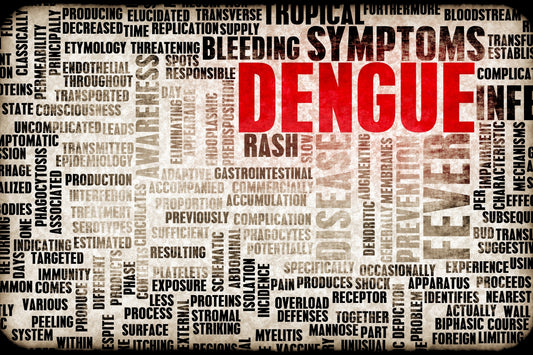What is Bioflim
Bacterial biofilms are multicellular formations composed of highly hydrated and dense communities of microorganisms that are embedded in the matrix of self-synthesised, proteins or polymeric materials . They are able to be attached biological or abiotic surfaces.
One of the characteristic properties of biofilms is high resistance to the adaptive and innate immune systems as well as tolerance to high concentrations of antibiotics/antimicrobial agents.
This causes persistent infections and makes them an economic and medical nuisance . They are linked to various infections, including urinary tract infections and chronic lung infections, osteomyelitis, endocarditis Otitis Media and many more.
Biofilms typically form on medical devices and implants like pacemakers, catheters prosthetic teeth, joints and other tissue surfaces of the host which can cause chronic infections . They are 100x more resistant to antimicrobial drugs when compared to individual bacterial colonies, leading to failure in antibiotic treatment.
Serratiopeptidase a protentional cure for biofilm-related health issues
Different strategies for providing the best solution for biofilm-related health issues, including dispersal, inhibition, as well as the use of biofilm eliminating agents (antibiotics) are being explored.
Proteins that are secreted and surface proteins have been shown to play a significant part in biofilm formation, stability, and control .Thus, the idea of proteases was to be a possibility for treatment for biofilms. This was further confirmed by research studies.
Proteases isolated from various organisms have proven effective against biofilms, with the metalloproteases, in particular, being a key factor. Additionally commercial proteases have proven effective in the removal of biofilms.
Serratiopeptidase is a widely accessible bacterial metalloprotease, has been proven that it is effective in tackling a wide range of biofilm-related medical conditions due to the following factors:
- It may alter the virulent phenotypes of biofilms made by bacteria.
- It's efficient against biofilms that are mature.
- It boosts the bactericidal action of antibiotics on biofilms containing bacterial
Various in vitro studies show a positive impact of serratiopeptidase against biofilms
Numerous studies in vitro studies demonstrate serratiopeptidase has a positive effect against biofilms. It is a part of a diverse set of proteins that are involved in the essential mechanisms related to bacterial virulence like adhesion, invasion and biofilm creation .
Serratiopeptidase inhibits surface proteins of cells Ami4b, internalinB, autolysin, and ActA and thus decreases the capacity to Listeria monocytogenes to form biofilms as well as to infiltrate host cells. This results in the aversion of the initial adhesion of Listeria monocytogenes infected human gut cells .
The study investigated the roles in three serine proteases (proteinase K, trypsin as well as Chymotrypsin) along with two other metalloproteases (serratiopeptidase and carboxypeptidase) against biofilm formation as well as in the human cell invasion process with different varieties that belong to Staphylococcus aureus and Staphylococcus epidermidis. Of all the proteases examined, only serratiopeptidase has been found to block its activity in all tested strains. It had a small effect on adhesion effectiveness (20 percent) but significantly reduced the efficiency of invasion (200-fold) of 200-fold Staphylococcus aureus. Serratiopeptidase did not affect the viability of bacteria and did not show any cytotoxic effect on eukaryotic cell lines which suggests its security.
Serratiopeptidase destroys Staphalococcus aureus
A study of the antiinfective capability of serratiopeptidase against Staphylococcus aureus revealed its effects on a discrete number of surface proteins. One such protein is At1 which helps in internalization of staphylococcus in host cells, confirming that serratiopeptidase modulates adhesins and autolysins in Staphylococcus aureus.
Further, the action of serratiopeptidase is not only restricted to initial bacterial attachment on abiotic surface but is also effective on mature biofilms. The author emphasised that serratiopeptidase hinders the entry of pathogens in human tissue as well as impairs adhesion of pathogens to prostheses, catheters, and medical devices.
The researchers developed a mutant form of serratiopeptidase with no proteolytic activity. The developed mutant was found to maintain anti-biofilm property, suggesting that this property is independent of the proteolytic activity of serratiopeptidase.
They concluded that serratiopeptidase is a potential antipathogenic agent with or without proteolytic activity and prevents the formation of biofilms on medical devices. Further, authors suggested the need for research to identify the mechanism of action of serratiopeptidase in biofilm regulation that is unrelated to proteolytic activity.
Recently, the study evaluated the antibiofilm ability of serratiopeptidase against Staphalococcus aureus infection on osteoblastic MG63 cells. The proinflammatory chemokine MCP1 was used as an immunological marker. Serratiopeptidase impaired the invasion capability of Staphylococcus aureus in the osteoblastic cells and lowered the secretion of MCP1. It is worthwhile to note that serratiopeptidase did not affect the viability or proliferation of the osteoblastic cells, indicating its safety in the treatment of bone infection.
Further, combined treatment of serratiopeptidase with antibiotics is a novel approach in the treatment against bacterial biofilm infection. The combination has been shown to have synergistic effects. Serratiopeptidase is thought to work like a biological "nanodrill" and disrupt the bacterial biofilm membrane, thus paving the way for antibiotics to act. Serratiopeptidase was also shown to be more effective as compared to other proteases.




